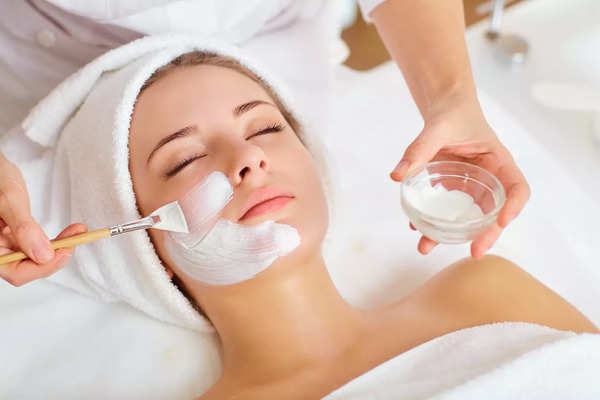Short-term effects
Irritation and redness: The chemicals present in bleach, such as hydrogen peroxide and ammonia, can irritate the skin, leading to redness, inflammation, and a burning sensation upon application. This reaction is more pronounced in individuals with sensitive skin.

Allergic reactions: Some people may develop allergic reactions to the ingredients in facial bleach, resulting in symptoms like itching, swelling, hives, and even blistering. It’s essential to perform a patch test before using bleach to check for any adverse reactions.
Dryness and flakiness: Bleach strips the skin of its natural oils, disrupting the skin’s moisture barrier and leading to dryness and flakiness. This can make the skin appear dull and rough, especially if proper hydration is not maintained.
Hyperpigmentation: Paradoxically, regular use of facial bleach can cause hyperpigmentation, where patches of the skin become darker than the surrounding areas. This occurs due to the skin’s response to the harsh chemicals, leading to increased melanin production in certain areas.
Chemical burns: In severe cases or when the bleach is left on for too long, it can cause chemical burns on the skin. This results in painful blistering, peeling, and even scarring, requiring medical attention to heal properly.

Long-term effects
Skin sensitization: Prolonged exposure to the chemicals in facial bleach can sensitize the skin, making it more prone to irritation and allergic reactions over time. This can exacerbate existing skin conditions and lead to chronic discomfort.
Skin thinning: Bleach contains strong oxidizing agents that can thin the skin’s outer layer over time, making it more susceptible to damage from environmental factors like UV radiation and pollution. Thinning of the skin can also increase the risk of bruising and injury.
Premature aging: The harsh chemicals in facial bleach can accelerate the aging process by depleting the skin’s collagen and elastin fibers, leading to the formation of fine lines, wrinkles, and sagging skin. Continued use of bleach can result in premature aging, making the skin appear older than it is.
Disruption of skin microbiome: The chemicals in bleach can disrupt the delicate balance of the skin’s microbiome, leading to an overgrowth of harmful bacteria and fungi. This can increase the risk of skin infections, acne breakouts, and other dermatological issues.
Systemic health effects: While the primary focus is on the skin, the chemicals in facial bleach can potentially enter the bloodstream through the skin barrier and have systemic effects on overall health. These may include respiratory problems, hormonal disruptions, and even increased cancer risk with long-term exposure.
Mitigation strategies:
To minimize the risks associated with regular facial bleaching, consider the following mitigation strategies:
Limit frequency: Avoid bleaching your face more than once every few weeks to give your skin time to recover between treatments.
Choose milder formulas: Opt for facial bleaching products that contain gentler formulations with lower concentrations of active ingredients.
Perform patch tests: Always perform a patch test on a small area of skin before applying bleach to your face to check for any adverse reactions.
Moisturize adequately: Use a moisturizer regularly to hydrate and nourish the skin, helping to prevent dryness and maintain its natural moisture balance.
Seek professional guidance: Consult a dermatologist before starting any bleaching regimen, especially if you have pre-existing skin conditions or sensitivities.
Consider alternative treatments: Explore alternative methods for hair removal and skin lightening, such as laser therapy, dermabrasion, or natural remedies, which may be gentler on the skin.
While facial bleaching can provide temporary cosmetic benefits, it carries potential risks and side effects with regular use. It’s essential to weigh the pros and cons carefully and prioritize the health and integrity of your skin when considering any cosmetic treatment.

